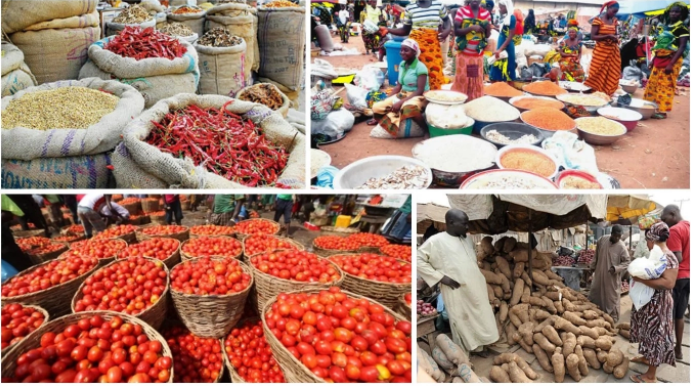‘Food prices soar despite drop in inflation’

Food prices have continued to be on the increase despite the decline in the inflation rate; representing the highest year-on-year increase in food inflation since the beginning of the new series in 2009.
This development was made available in a data released on Monday by the National Bureau of Statistics (NBS), showing that consumer price index (CPI), which measures rate of inflation, dropped for the sixth consecutive month.
The NBS reports that inflation rate dropped to 16.05% from 16.1% in June, but food index soared to 20.28 percent.
However the food price pressure continued into July with 20.28 percent (year-on-year) from 19.91 per cent; increasing by 20.28% (year-on-year) in July, up by 0.37% points from the rate recorded in June (19.91%).
On a month-on-month basis, however, the Food sub-index increased by 1.52 percent in July, down by 0.47 percent points from 1.99 percent recorded in June.
This represents the highest year on year increase in food inflation since the beginning of the new series in 2009.
The rise in the index was caused by increases in prices of bread and cereals, meat, fish, oils and fats, coffee, tea and cocoa, potatoes yam and other tubers and vegetables.
On a month-on-month basis, the Food sub-index increased by 1.52 percent in July, down by 0.47 percent points from 1.99 percent recorded in June.
The average annual rate of change of the Food sub-index for the 12-month period ending in July 2017 over the previous 12-month average was 18.25 percent, 0.38 percent points from the average annual rate of change recorded in June (17.87)percent.
“The consumer price index (CPI) which measures inflation increased by 16.05% (year-on-year) in July 2017,” the report read.
“This was 0.05% points lower than the rate recorded in June (16.10%) making it the sixth consecutive decline in the rate of headline year on year inflation since January 2017.”
According to the NBS, core inflation which excludes the prices of volatile agricultural produce eased by 0.30 percent in July to 12.20 percent points from 12.50 percent recorded in June. Core inflation similar to overall/headline inflation has declined consecutively since January 2017.
On a month-on-month basis, the Core sub-index increased by 1.00 percent in July, 0.32 percent points lower from 1.32 percent recorded in June 2017.
Increases were recorded in all COICOP divisions that yield the Headline Index. On a month-on-month basis, the Headline index increased by 1.21 percent in July 2017, 0.37 percent points lower from the rate of 1.58 percent recorded in June.
The percentage change in the average composite CPI for the twelve-month period ending in July 2017 over the average of the CPI for the previous twelve-month period was 17.47 percent, 0.11 percent point lower from 17.58 percent recorded in June 2017.
The Urban index rose by 16.04 percent (year-on-year) in July 2017, down by 0.11 percent point from 16.15 percent recorded in June, and the Rural index increased by 16.08 percent in July from 16.01 percent in June.
On month-on-month basis, the urban index rose by 1.25 percent in July 2017, down by 0.35 percent point from 1.60 percent recorded in June, while the rural index rose by 1.18 percent in July 2017, down by 0.39 percent point from 1.57 percent in June.
The corresponding 12-month year-on-year average percentage change for the urban index increased from 18.69 percent in June to 18.43 percent in July, while the corresponding rural index also increased from 16.56 percent in June to 16.60 percent in July.







